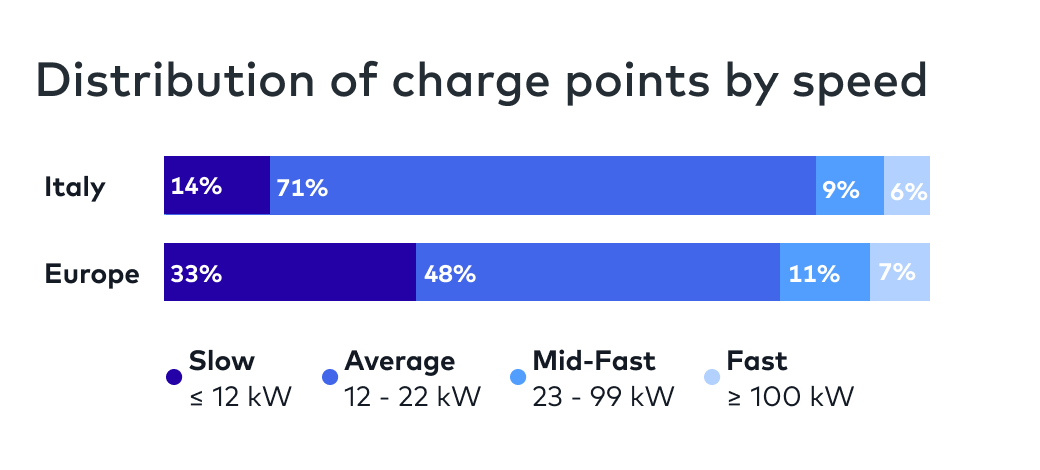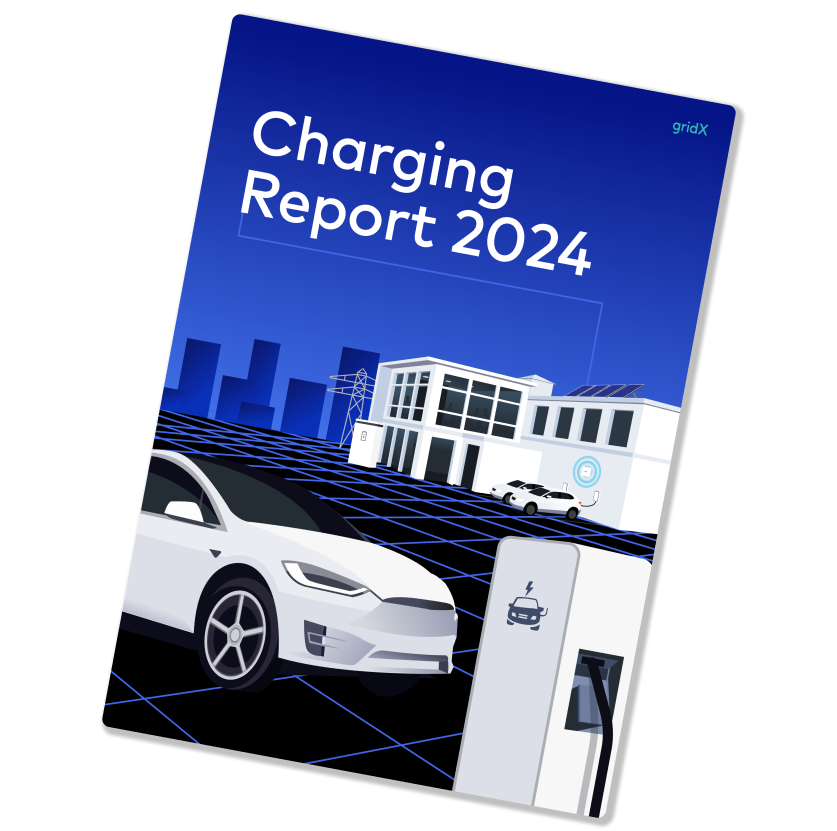The Italian government has had its ups and downs when it comes to energy policy. While great incentives have been introduced in the past, the southern European country lacks the stability to see them through. New regulations incentivizing the adoption of electric vehicles (EVs) and encouraging a free market that focuses on innovation show that Italy seems to be on the right path to its clean energy future.
The need for commitment
As mentioned, the Italian government lacks stability in their energy politics. Having put energy and climate at the center of its agenda, the country has ambitious targets to decarbonize their electricity by 2030. To meet this goal, their efforts are focused largely on sustainable energy generation. Unfortunately, Italy’s rate of renewable energy installations is lagging significantly behind the pace required to meet the EU’s 2030 targets. Currently, just 19% of the country's energy consumption is powered by renewable sources.
To counteract this and move in the right direction, the Italian government has created incentives to expand the charging infrastructure for electric cars. A positive incentive was the Superbonus 2023, formerly known as the Ecobonus 110%. This incentive stimulated a significant wave of environmentally conscious projects until it expired on June 30, 2022. Luckily, before this date, the bonus led to an increase of EV charging stations around Italy.

This year, the country’s new government brought forward amendments to the bonus that came into effect on January 1. These changes revised the deduction to 90% and credit transfers have been rendered inapplicable except for ongoing projects with applications submitted before February 16, 2023. Sadly, the bonus has not been revised further and has become less effective than its predecessor.
Incentives like the Superbonus show that Italy is on the right path and has the tools and financial aid to make renewable energy more attractive, but now the focus must be on using those tools effectively and aligning its focus on energy continuity.
More widespread fast charging
Based on recent strides in the adoption of EVs and the implementation of a stable charging infrastructure, Italy’s public charging network is continuously expanding. The focus now remains on enabling widespread access to high power charging stations. It is especially important to meet the needs of urban centers and ensure an even distribution of charging stations across the nation. Regions such as Lombardy, Piedmont, Veneto and the north have experienced significant improvements in their charging infrastructure in recent years, which led to an overall increase of installed charging stations of 41% and 36,772 charging points in 2022. Now, the other regions must catch up.

To ensure this widespread network of charging infrastructure, rural areas still need greater access. To make EV adoption more attractive everywhere, Italy has published the directorial decrees on the implementation of incentives for the purchase and installation of EV charging systems for private individuals and condominiums. The government plans to subsidize the installation of charging stations with expected contributions of up to 80% of the purchase and installation price of the charging infrastructure (e.g. charging stations or wallboxes). The maximum contribution will be €1,500 for private users and up to €8,000 for communal areas of apartment buildings. Funds totaling €80 million are available for the years 2022 and 2023.
Making e-mobility green
Despite Italy’s recent green energy gains, their renewable installation rate is still lagging and the country is heavily reliant on gas. They create less than 2 GW of wind capacity and 3 GW of solar capacity for energy generation. In 2020, wind and solar only accounted for 16.5% of Italy’s electricity production, highlighting the slow progress that has been made since.
Companies are also leading the way towards clean energy solutions. Edison, for example, plans to invest €10 billion into the energy sector between 2023 and 2030. Half of this will go to the development of renewable energy, one billion will be invested in flexibility systems and 2.5 billion will be invested in energy services that decarbonize consumption.
Renewable energy producer vexuvo is also investing significantly in expanding the photovoltaic (PV) market to align with the country’s ambitious energy goals As the company plans to establish 80 new PV plants across 13 regions, it is clear that Italy is able to set its focus right when it comes to the ongoing development of EV charging infrastructure. The government's initiatives now include the installation of charging stations for businesses and professionals, as well as the adoption of smart solutions and sustainable sources.
Gearing up on smart solutions
The government is not only supporting the growth of the EV market, but also paving the way for the integration of EVs into wider energy systems – both through smart charging and home energy management systems (HEMS). This way, PV-generated energy used to charge EVs can be maximized, ultimately lowering costs and emissions. By everything working intelligently and efficiently, EV charging projects can be more quickly scaled and the e-mobility revolution can go into the next gear.
The ultimate goal is for intermittent renewable power and electric vehicle charging infrastructure to be combined into a holistic system that provides energy stability for households and businesses. This will soon become even more important as the Italian government decided that in 2024, the “protected electricity market” will come to an end and every contract marked as “vulnerable” will automatically enter the auction and free market.
This new regulation presents the perfect opportunity for energy providers to look towards innovative digital technology that meet end users’ demand for holistic, user-friendly and sustainable solutions.
This decision will affect approximately over six million contracts, forcing utilities to compete with each other to get a share of these contracts. According to gridX Account Executive Andrea Albergoni, "this new regulation presents the perfect opportunity for energy providers to look towards innovative digital technology that meet end users’ demand for holistic, user-friendly and sustainable solutions. Combining e-mobility, rooftop solar, batteries and other assets with a HEMS is the perfect example."
The road to energy stability is rocky and needs set commitments. When taking a broader view, we can see that strategic investments in renewable energy resources and intelligent solutions are likely to provide substantial long-term savings and opportunities for households and companies in Italy.
If you want to learn more about smart solutions and the broad range of EV charging opportunities, visit us at E-Charge in Bologna from November 16-17 at booth E32!



